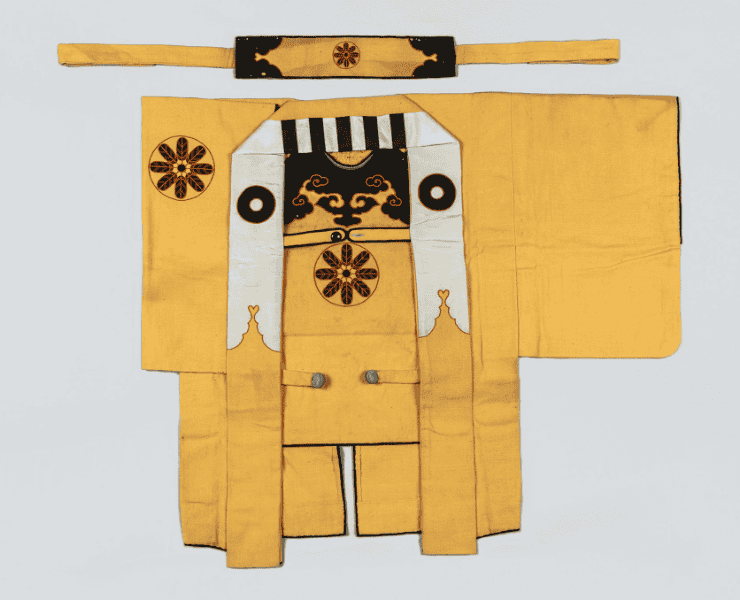Inoue family and the Ozu domain
 Fireman jacket (mainly used for emergency guard duties)
Fireman jacket (mainly used for emergency guard duties)
The Inoue Sekiemon family and the Ozu domain
Throughout the Edo period (17th to 19th century), the Inoue Sekiemon family had close ties with the Kato clan of Ozu domain in Iyo Province (present Ozu City, Ehime Prefecture).The Inoue family first served Kato Mitsuyasu around the time that he took over Kai Province (present Yamanashi Prefecture) in the late 16th century. It is said that the eldest brother of the Inoue family remained in the service of his lord, while the younger brother, an expert firearms handler, moved to Sakai and became a gunsmith.
In 1653, Hachibei, the head of the family, was granted the name Sekiemon by the second lord of the domain, Kato Yasuoki. “Sekiemon” was derived from a history that Hachibei has hasty personality: the word hasty is spoken in Japanese “sewashii” or “seku” so that the name starting with similar sounds was given.
Relations between the Inoue familyand Kato clan were extensive, with the Inoue family offering New Year's greetings as well as congratulatory speeches on the succession of feudal lords and on occasions of marriage. In 1797, Katatsugu the son of Sekiemon Yoshitsugu (8th head of the family), traveled from Sakai to Ozu, where he gained great prestige by receiving a duck shot with a gun he presented to the domain lord. He also accompanied the lord on deer hunting and Noh play viewing.
After the Shogunate government ended followed by the abolition of feudal domains and establishment of prefectures, and the Kato clan moved to Tokyo, Sekiemon Hisatsugu (11th head) paid his respects and presented them with jute rugs, a Sakai specialty when he traveled to Tokyo.
Moreover, the Inoue family's Buddhist altar holds ten memorial tablets of the lords of the Ozu domain, beginning with Kato Yasuoki.